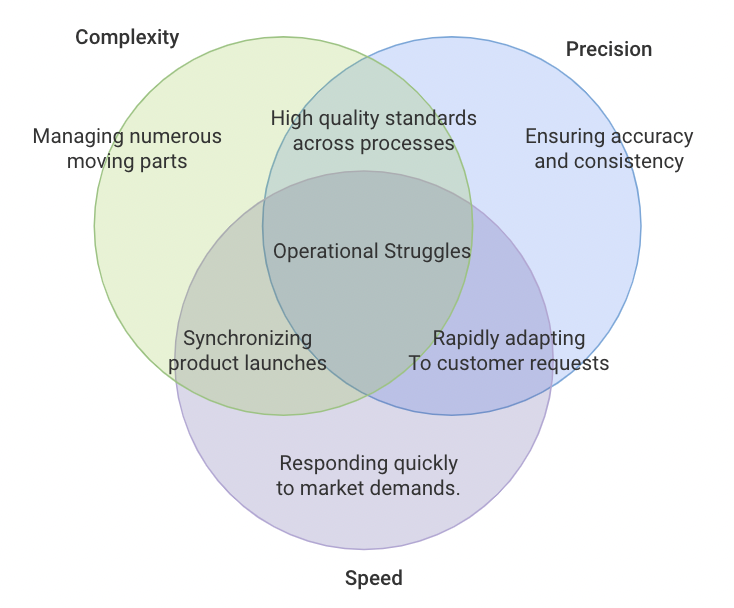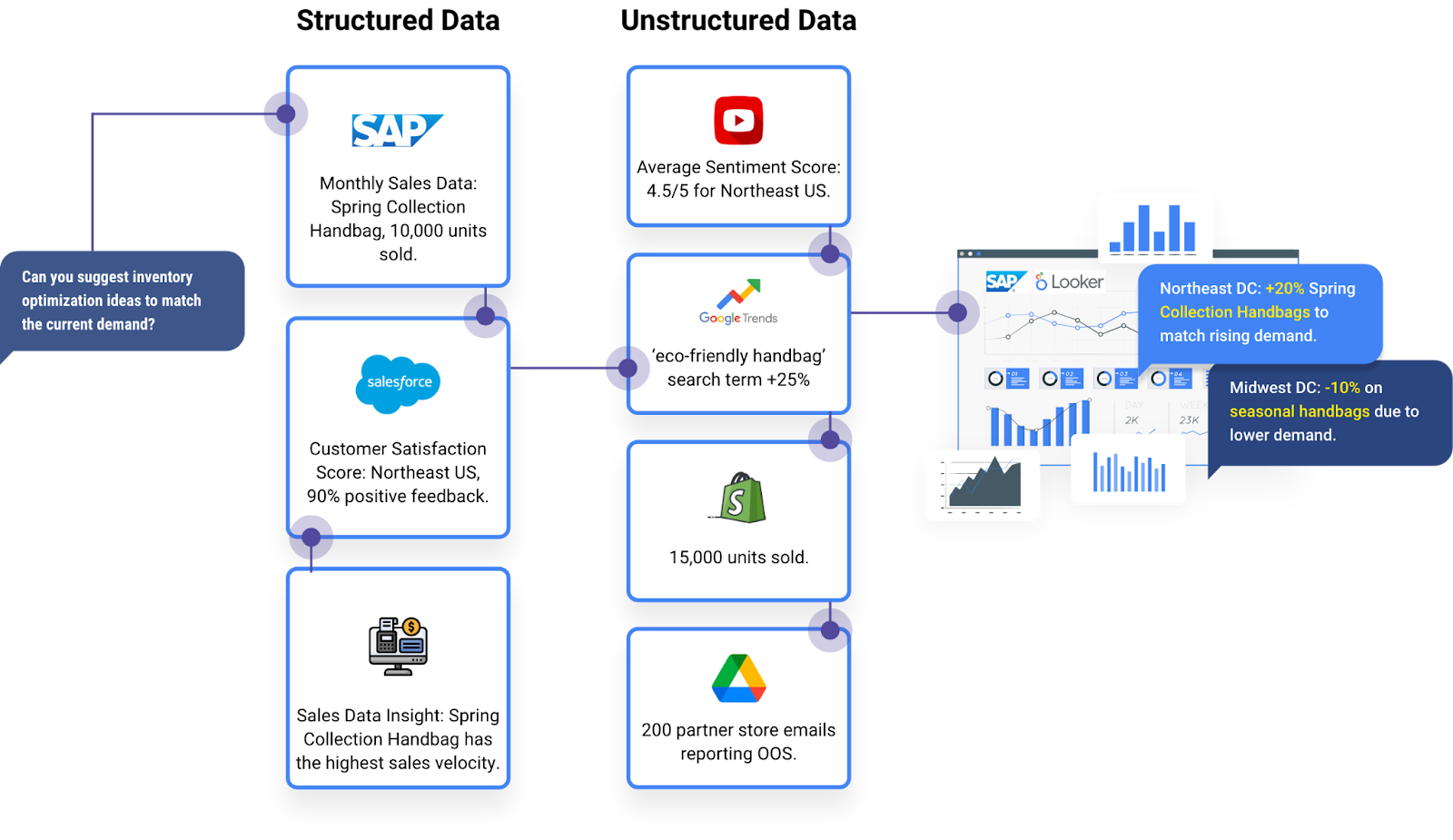
Transform Your Supply Chain Planning and Marketing Strategies with Google Cloud and SAP Integration

Transform Your Supply Chain Planning and Marketing Strategies with Google Cloud and SAP Integration
July 9, 2024 | Tarun Kumar
Blog / Disruption Proof Supply Chain: Empower your Supply Chain with Planning in a Box
We met several supply chain and manufacturing leaders at Google’s Houston office last week. One of the burning questions in the room was, “How do we tackle disruptions?”
If we look at the 2024 calendar, we had some devastating natural events.
In January, a Red Sea attack held up Tesla and Volvo car parts, bringing production to a complete halt.
The Port of Baltimore was closed in March due to a bridge collapse, with over 40 vessels stuck inside the fallen bridge. The U.S. Secretary of Transportation called it “a major and protracted impact on supply chains.”
The Houstom storm in May caused widespread damage, power outages for nearly one million residents, and significant disruptions to energy supplies and production lines.
But, it would be wrong to think disruptions are only limited to big macro events. In the life of a supply chain planner, every minor digression from the master plan can lead to disruption. For instance, a sudden social media trend can spike demand for a product overnight, catching retailers off guard. An unexpected shortage of raw materials due to a supplier’s technical issue can halt production. These everyday disruptions are just as critical to manage.

Decision-making in supply chains hinges on three key variables: complexity, precision, and speed.
When a social media trend boosts demand, complexity increases. Planners must adjust production schedules and source more materials quickly. This added complexity makes it harder to keep precision in forecasts and inventory levels. Data needs to be quickly gathered and analyzed to avoid overproduction or stockouts.
Speed is crucial. Quick decisions and fast actions help manage these disruptions effectively. However, as complexity grows, the ability to make swift and precise decisions often diminishes. This makes it difficult for many organizations to keep everything in balance.
For example, a sudden demand spike increases complexity, requiring quick adjustments in production and logistics. This can slow down decision-making and reduce accuracy, leaving organizations struggling to adapt swiftly and efficiently.
Balancing these variables is essential, but with traditional tools, it is nearly impossible.

Becoming disruption-proof is about finding the sweet spot at the intersection of complexity, speed, and precision. It means being able to handle increased complexity without losing precision or slowing down.
With traditional tools, achieving this balance is impossible because they can’t handle the fast-changing data and the need for quick decisions. These tools struggle to bring together all the information you need in real-time.
To solve this, supply chain teams are using decision intelligence platforms. These platforms help IT and business teams integrate, analyze, and innovate within a single, shared environment.
Decision intelligence platforms like Pluto7’s Planning in a Box bring data from various sources together on a common platform. They integrate structured data like inventory levels, sales figures, and supplier information with unstructured data like social media trends and customer feedback. By doing so, it sets the stage to drive unparalleled insights out of your data.
Now, how does it help the planner optimize decisions in real time? Let’s consider the example of a luxury handbag manufacturing company. The demand planner wants to sense external demand.

Here’s how Planning in a Box will collect data from various sources and guide the planner:
The platform integrates all this data into a single dashboard. The planner sees a comprehensive view of current demand and inventory. It also equips the planner with a Generative AI Agent that lets the user ask questions like “What is the current inventory of our new handbag style across all locations?” and get instant answers.
Demand planners are facing new challenges and their roles are evolving to keep up. Gartner predicts that by 2025, demand planners will no longer just create forecasts. Instead, they will curate outputs tailored to different stakeholders. This means that the way organizations approach, develop, and use demand plans will change significantly. At the core of this transformation is the need for a centralized planning platform.
Planning in a Box embodies this new approach:
Finally, how do you shift from siloed decision-making to a more integrated, circular approach? Google Cloud provides a set of tools to enable this transformation. From BigQuery for data warehousing to Vertex AI for machine learning, Google Cloud has everything needed to modernize supply chain management. Planning in a Box combines these tools, making the AI journey fast and effortless.
Supply chain teams using Planning in a Box, including those at Levis, ABInBev, Tacori, and Lixil, often start with one use case. For example, they might begin by improving demand forecasting. As their data maturity evolves, they can add more AI capabilities, tackling additional use cases and continuously enhancing their operations.
For those eager to start and looking for a roadmap, Pluto7 is offering a 2-day rapid POC, where you can enable this platform to solve your unique challenges in as quickly as 48 hours. Sign up here.
ABOUT THE AUTHOR